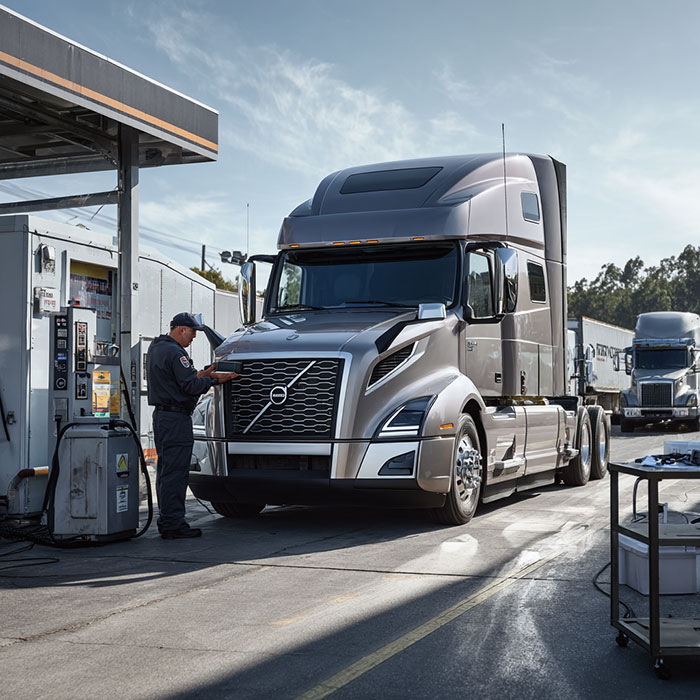
How Can the Trucking Industry Attract Younger CDL Drivers?
The COVID-19 Pandemic has had one somewhat positive outcome: it has shown how important America’s logistics networks are, and demonstrated why the country’s truck drivers are so important.
With little warning, freight delivery channels were challenged by this situation. But America’s truck drivers did what they always do: they got in their trucks and they drove millions of miles delivering food, hospital supplies, manufacturing and home building materials, and much more. The fact is, they kept America moving.
But a commercial vehicle driver shortage is a looming problem. As the country gears up to come out of the Pandemic-forced recession and significant unemployment, the driver shortage must be addressed. The country’s aging baby-boomer drivers are retiring. The average age of commercial truck drivers in the U.S. is over 55. Over the next decade, the trucking industry will need to hire over 1 million new drivers.
One solution to this problem is to offer younger drivers a pathway to a high paying career in trucking.
Unfortunately, while 49 states allow individuals to obtain their commercial driver’s license (CDL) at the age of 18, federal regulations prohibit CDL drivers under 21 from driving across state boundaries. They can drive within a state, but cannot cross state lines.
This means a 19 year old driver based in Philadelphia, PA cannot legally accept a route driving just a few miles to New Jersey, but inexplicably can make the 630-mile round trip in a tractor trailer from Philadelphia to Pittsburgh, PA.
The trucking industry is severely limited by this arbitrary requirement, which prioritizes age over qualifications. Driving a truck is an incredible responsibility and requires properly trained drivers, but age alone is not the single qualifying measure. Ask anyone tasked with the responsibility to supervise drivers and commercial vehicle safety, and they will tell you that experience, not age, is a greater factor in safety.
The 21 year old interstate requirement also limits the career options for young adults. Many high school students choose other vocational training because they cannot be considered for an interstate trucking job until they are 21. The trucking industry loses out on many qualified young people.
Lowering the federal interstate driving age would address these problems. Giving younger adults an opportunity to join the trucking industry is a win-win for the drivers and the many companies who provide critical transportation services in many sectors of the economy. But it must be managed carefully with safety as the highest priority. It must include training, mentorship, oversight and documentation to ensure that younger drivers are provided adequate preparation.
Fortunately, the Federal Motor Carrier Safety Administration has proposed a pilot program to study allowing trained drivers under 21 to drive interstate. The pilot is based on bipartisan legislation previously introduced in the House and Senate that would eliminate the age obstacle while requiring enhanced safety training and mentorships for new drivers.
We hope this pilot is implemented to give this idea room to run.
What are the specific requirements for a younger driver to qualify for the proposed pilot program?
The Federal Motor Carrier Safety Administration (FMCSA) proposed the pilot program to allow trained drivers between 18 and 20 to drive interstate. Under this program, eligible drivers must:
- Have a CDL and complete an extensive apprenticeship or mentorship program.
- Follow stricter safety and monitoring protocols, such as electronic logging devices and onboard cameras.
- Receive additional training beyond standard CDL requirements, including supervised driving hours with an experienced mentor.
- Drive vehicles equipped with advanced safety technologies like automatic emergency braking and speed limiters.
This pilot program aims to assess whether younger drivers can safely handle interstate trucking under these controlled conditions.
How do other countries handle the minimum age for commercial truck drivers, and what can the U.S. learn from them?
Different countries have varying age limits for commercial truck drivers:
- Canada: Drivers can obtain a CDL-equivalent license at 18 but must be 21 to drive across provinces.
- European Union: Many EU countries allow truck driving at 18, provided the driver undergoes specialized training and meets competency standards.
- Australia: Some states permit truck driving at 18 but require additional training and mentorship before long-haul or interstate driving.
The U.S. can learn from these models by balancing lower age restrictions with rigorous training, supervision, and technology use to ensure safety.
What incentives, aside from lowering the driving age, could make trucking more appealing to younger workers?
To attract younger drivers, the industry could:
- Increase pay and benefits: Offering competitive wages, signing bonuses, and health benefits can make trucking more attractive.
- Improve work-life balance: Many young people hesitate to join trucking due to long hours and time away from home. Fleets can offer regional routes or flexible scheduling to address this.
- Introduce modern technology: Younger workers are drawn to technology-driven careers. Using automation, route optimization apps, and modern truck features (like autonomous driving assistance) could make the job more appealing.
- Enhance career growth opportunities: Establishing clear career pathways from driver to fleet manager or logistics specialist can help younger drivers see trucking as a long-term profession.
Disclaimer: The information in this article is based on the data available as of its writing and is meant to inform and guide prospective CDL trainees. For the most current information and specifics about CDL training programs, please contact SAGE Truck Driving Schools directly.
Please fill out the information below and our team will reach out to chat about your options.


